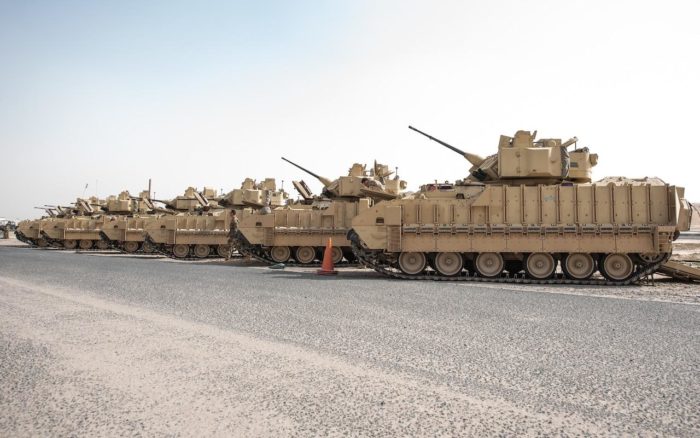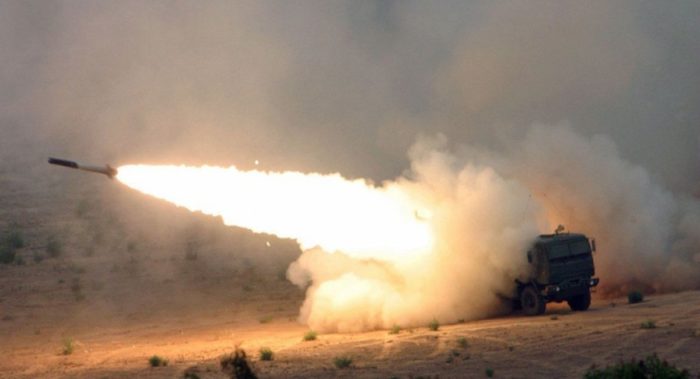It's only natural that reports in mass media can’t paint a comprehensive picture of the undergoing all-out Ukraine-Russian war. But at least mass media should avoid distorting reality. Alas, this is precisely what happens when western mass media discuss why the Ukrainian strategic defensive operation is so successful.
This depiction is in fact only a fraction of what has really taken place. In particular, the role of tube artillery/MLRS and missiles is totally disregarded, with all ensuing negative strategic implications for future Western security assistance.
In the following text, I'll explain why this is so.
First of all, the undergoing all-out Ukraine-Russian war should be perceived for what it actually is: a high-intensity army-to-army clash where both sides have loads of heavy equipment like armor, artillery, air defense systems, planes, and so on.
Ukraine's artillery was drastically improved since 2014
The enlargement and improvement of artillery were one of the facets of this preparation.
In 2014, the Ukrainian Army had at its disposal:
- only three separate brigades of tube artillery (Msta-S, Msta-B systems);
- three regiments of heavy MLRS (Uragan, Smerch systems);
- one missiles brigade (Tochka-U).
- As well, nine brigades of the Land Forces had so-called brigade artillery groups of their own (MLRS Grad, SPH Gvozdika, and Akatsia) to support maneuver components with fire.
The 2014-15 active warfare in Donbas made it clear that Ukraine lacked the proper density of functioning artillery to support offensive operations in proportion to the maneuver component involved. Another lesson was that the Russian artillery caused a major fraction of damage through long-range fire/non-contact warfare compared with more classical contact warfare - up to 60% of losses were caused by enemy artillery.
And to counter enemy artillery, one needs artillery of one's own for the so-called counter-battery fight.
With these lessons in view, the Ukrainian Armed Forces artillery corps was enlarged since 2015:
- The 27th MLRS regiment with Uragan systems was turned into a brigade attached to the 4th battalion;
- The 32nd MLRS regiment with Uragan systems was established;
- The 107th MLRS regiment with Smerch systems was turned into a brigade;
- The 19th missile brigade added 2 battalions of Tochka-U missiles - in order to have five in general.;
- The 40th, 44th, and 406th tube artillery brigades were established and armed with Giatsynt-B, Msta-B and D-20 towed howitzers;
- The 43rd heavy tube artillery brigade with mighty Pion SPH of 203 mm caliber was also established.
All the newly established combined arms brigades in Land Forces (7 in general), Navy (2), and all Air Assault Forces brigades (6) have received their own brigade artillery groups. In addition to all these steps, two artillery brigades (38th
and 45th) with Giatsynt-B and Msta-B systems were established as the part of strategic Reserve Corps.
All in all, the artillery of the Ukrainian Armed Forces over the last seven years improved both in quantity and quality. The improvement in quality was achieved thanks to a more rigorous training program that annually involved over 35 live field brigade tactical exercises and over 200 live field battalion tactical exercises. During these exercises, operators of artillery systems were trained to both support offensive and defensive maneuver elements, as well as to conduct counter-battery fights. It is thanks to this rigorous preparation that the Ukrainian Armed Forces artillery was ready to meet the all-out war with Russia
The role of artillery in modern warfare
Now let’s turn a bit to theory to better understand the role of artillery in modern warfare - before returning to the real-world experience.
First of all, since WWI, modern warfare has followed the combined arms approach, meaning that different branches of arms are involved to get the planned results on the battlefield and in operations. And artillery, along with infantry, is an integral part of combined arms warfare since its onset more than a century ago - both to support defensive and offensive maneuver elements, as well as for counter-battery fighting. Despite all the changes in the character of war, artillery ensures that 60-70% of enemy targets are destroyed, given its cheapness and ubiquity.
The mass effective employment of artillery is an important factor in conducting a strategic defensive operation.
Such targeting is done both in the tactical depth of enemy defenses (15-20 km) by both brigade artillery groups and separate artillery brigades. Systems like Smerch MLRS
and Tochka-U are able to target priority enemy targets at the depth of over 40 km. Artillery also makes it possible to swiftly target enemy forces in the direction where there is a risk of defensive belt penetration.
The Smerch in action
In other words, the mass effective employment of artillery is one of the factors that make defense effective through an active approach. Simply speaking, it’s one thing to destroy enemy equipment one by one in close combat with the inherent risk involved. And it is totally another thing to destroy the enemy in mass at ranges of over 10 km with little risk to the people in question.
With all mentioned above, now let’s turn to the ongoing all-out Ukraine-Russia war. It won’t be an overestimation to say that were it not for artillery, the employment of solely light antitank guided missiles (ATGMs) just would have prolonged the agony of Ukrainian forces and the Ukrainian strategic defensive operation would not have been so successful.
On the contrary: it is the application of combined arms warfare - light mobile infantry with ATGM, armor, and artillery, piloted aviation, and combat UAVs - that disrupted the original Russian plan and destroyed fully or partially 40% (50 battalion tactical groups) of the Russian forces involved in the original assault. In this complex destruction of the enemy, tube artillery, MLRS, and missiles played a major role.
Just a couple of examples to illustrate the point:
- It was a Tochka-U missile that made a strike at Berdiansk port destroying one Russian big amphibious ship and setting on fire others;
- It was the involvement of Uragan MLRS that made it possible to strike Russians in Chornobayivka (Kherson Oblast) multiple times causing mass losses in manpower and equipment;
Artillery played the main role in destroying Russian troops in Chornobayibka
- Grouping of Ukrainian Forces defending Kyiv on the left bank of the Dnipro river consisted of 11 battalions of three combined arms brigades (1st tank, 58th motorized, 72nd mechanized) with its own brigade artillery groups along with attached two battalions of 27th MLRS brigade with Uragan systems and one battalion of 43rd heavy tube artillery brigade with the mighty Pion SPH of 203 mm caliber.
Pions in action
Other battalions of the 27th
MLRS brigade were attached to forces defending Kharkiv. Also, a lot of instances might be found where artillery was used to defend Kyiv on the right bank of the Dnipro River, in the fight around Trostianets and Okhtyrka (Sumy Oblast), in Mykolayiv Oblast, and in Donbas. The results of artillery employment are easily discernible: massive amounts of destroyed enemy equipment were obliterated beyond recognition and charred by fire.

From this conclusion stems another one important thing - that tube artillery (M777, M109), MLRS (M142, M270), and 300 km range missiles (ATACMS) are the number one priority in case of future western security assistance to Ukraine. With a proper number of these systems, along with the proper ammunition for them, Ukraine can quickly and decisively turn the tide of war in its turn, not to mention save countless lives.

Mykola Bielieskov is a Research Fellow at the National Institute for Strategic Studies under the President of Ukraine. The expressed views are that of the author only and don't represent the official position of the National Institute for Strategic Studies
Related:
- Like Napoleon’s 1812: why Russian troops retreated from northern Ukraine
- What weapons for Ukraine would help it win the war against Russia
- Ukraine’s strategy in Russian invasion: similar to Finland’s Winter War





